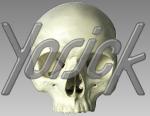
The site's hierarchy
Navigation
| M | T | W | T | F | S | S |
|---|---|---|---|---|---|---|
| 23 | 24 | 25 | 26 | 27 | 28 | 1 |
| 2 | 3 | 4 | 5 | 6 | 7 | 8 |
| 9 | 10 | 11 | 12 | 13 | 14 | 15 |
| 16 | 17 | 18 | 19 | 20 | 21 | 22 |
| 23 | 24 | 25 | 26 | 27 | 28 | 29 |
| 30 | 31 | 1 | 2 | 3 | 4 | 5 |
- Les premiers zoom de galaxies sont accessibles
- Le halo FOF 6133 de la boite Horizon L et le halo FOF 544 de Horizon S ont été resimulés avec plusieurs techniques de zoom. Il est important que chaque "zoomer" valide sa méthode, avant de lancer une campagne de zoom sur un plus grand cataloque.
- Les données de la simulation Mare Nostrum sont disponibles
- 34 snapshots jusqu’à z=4 sont accessibles sur horizon3 et sur le serveur de fichiers de l’IDRIS à la collaboration Horizon.
- Méso Machine HPC1 opérationnelle
- Depuis le 23 Octobre 2005, la Méso machine du site horizon est operationnelle. Elle correspond à 3 quadriprocesseurs avec chacun 64 Giga de RAM reliés par infiniband, ainsi qu’un access conséquent (sur une base de projet dédié) au reste de la ferme). Son acces est ouvert a toute personne de la collaboration ayant acces à la minigrille et qui en fait la demande a admin-minigrille
- http://
- Workshop Horizon le 14 et 15 novembre 2005
- Il aura lieu à Paris les 14 et 15 novembre 2005 (prévoir une nuit sur place). L’enregistrement est ouvert dans la rubrique "meeting!"
- http://
Yorick

Yorick and Horizon
Horizon’s integration into yorick (and the corresponding packages and documentation) is described in yorick-cosmo.
It can be downloaded here :
What is Yorick?
Yorick is an interpreted programming language, designed for postprocessing or steering large scientific simulation codes. It incorporates mpi and compiled pluggins. Smaller scientific simulations or calculations, such as the flow past an airfoil or the motion of a drumhead, can be written as standalone yorick programs. The language features a compact syntax for many common array operations, so it processes large arrays of numbers very efficiently. Unlike most interpreters, which are several hundred times slower than compiled code for number crunching, yorick can approach to within a factor of four or five of compiled speed for many common tasks. Superficially, yorick code resembles C code, but yorick variables are never explicitly declared and have a dynamic scoping similar to many Lisp dialects. The yorick language is designed to be typed interactively at a keyboard, as well as stored in files for later use. Yorick includes an interactive graphics package, and a binary file package capable of translating to and from the raw numeric formats of all modern computers. Yorick is written in ANSI C and runs on most operating systems (*nix systems, Windows, MacOS). For a short overview, see the Linux Gazette and Unix review articles.
Main Features: A compact syntax, similar to C, but with array operators Fast Easily Expandable (dynamic linking of C libraries) Efficient manipulation of arbitrary size/dimension arrays Extensive graphic capabilities. MPI integration and compiled, C,C++ and fortran pluggins. See in particular the yorick unofficial page and in particular the yeti pluggin
Getting Started
If you aren’t sure whether you can use yorick at all, read about the flow past an airfoil or the motion of a drumhead examples. These are standalone yorick programs; yorick is also very useful as a postprocessor for much larger simulation codes. Finally, yorick can be used in combination with presentation or desktop publishing software to produce the figures accompanying a scientific talk or paper. If you know what to do with a PostScript graphic, you can begin using yorick immediately.
The first thing to read is the first chapter of the user manual. If you are still interested in yorick, download it so you can reread the manual while typing in the examples to see how yorick works first hand. You will want to read about the yorick development environment as well. To follow along online, you should probably download all this documentation as well, which you can do from the downloads page.
To complete your introduction to yorick, run and study the demo programs: demo1.i 1D hydrodynamics code, simulates sound and shock waves demo2.i 2D wave equation solver, simulates motion of a drumhead demo3.i chaotic pendulum simulation, inspired by SF Exploratorium demo4.i 2D flow past and airfoil using analytic functions demo5.i demonstration of how to use 2D graphics for 3D effects
Web Sites
The yorick "official" home page is yorick.
Yorick is also available as a Debian Linux package from http://www.debian.org or from fink on OsX.
Contacts
Questions about Yorick? You may try the Yorick Forums or the mailing list. If you are out of luck there you may contact  llnl.gov" class="spip_out">David Munro, the Yorick author.
llnl.gov" class="spip_out">David Munro, the Yorick author.
